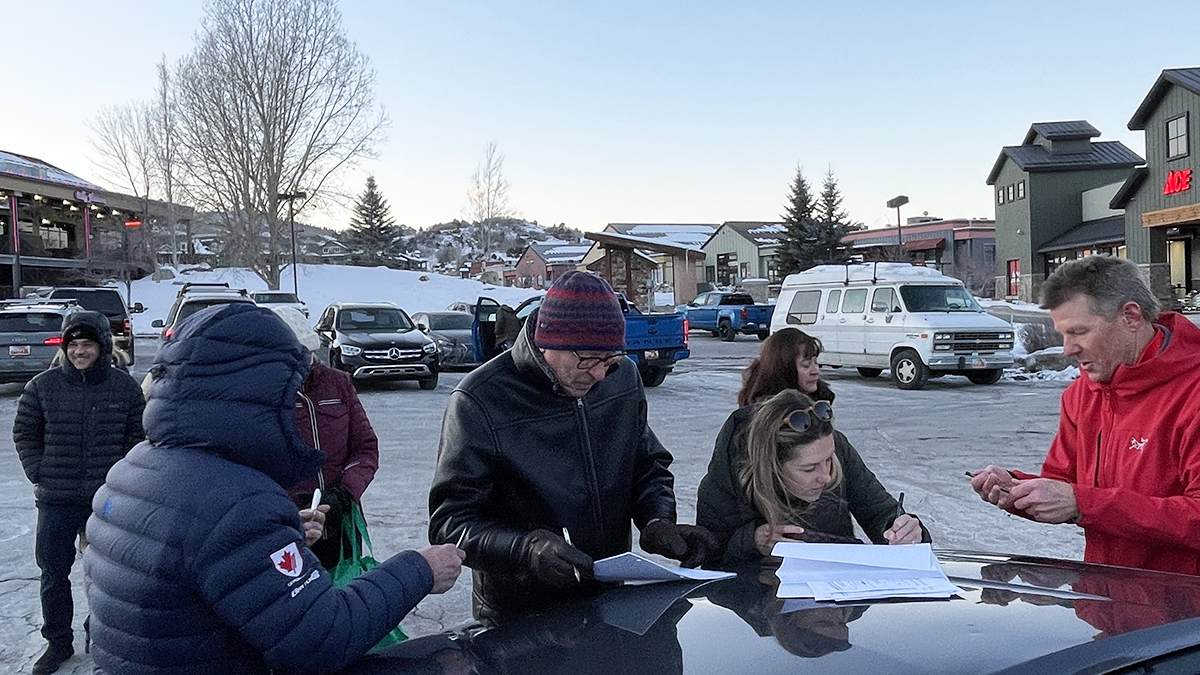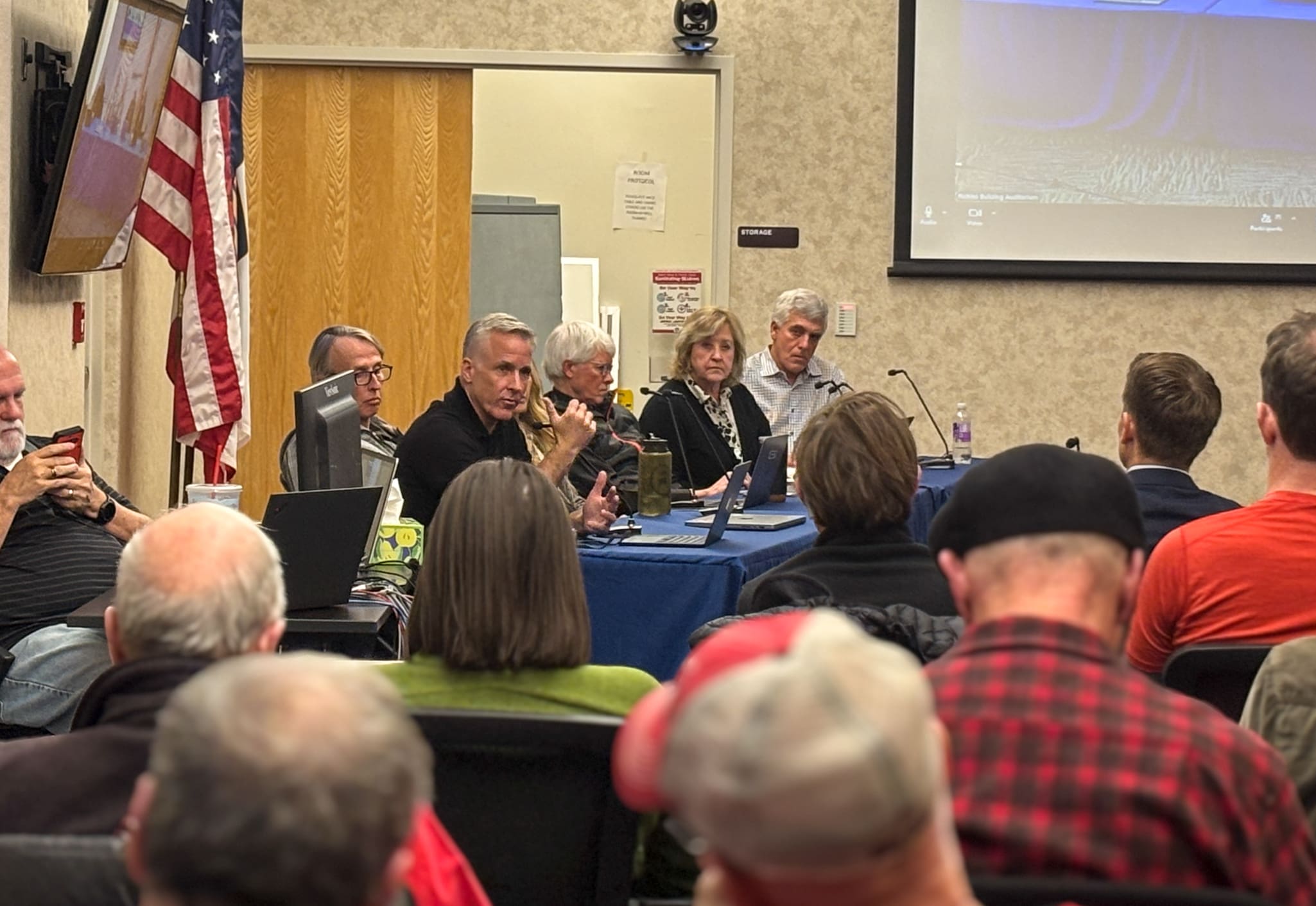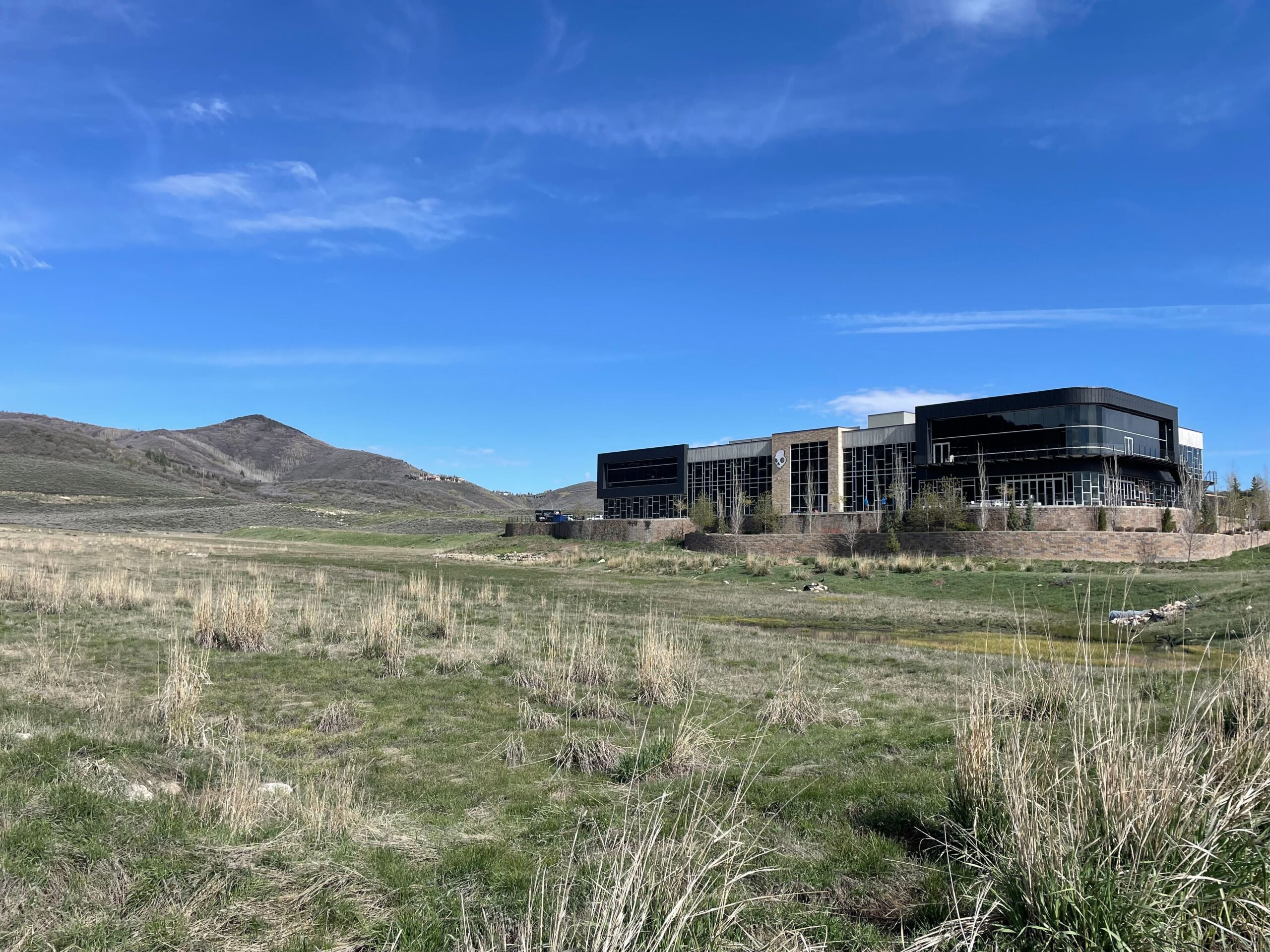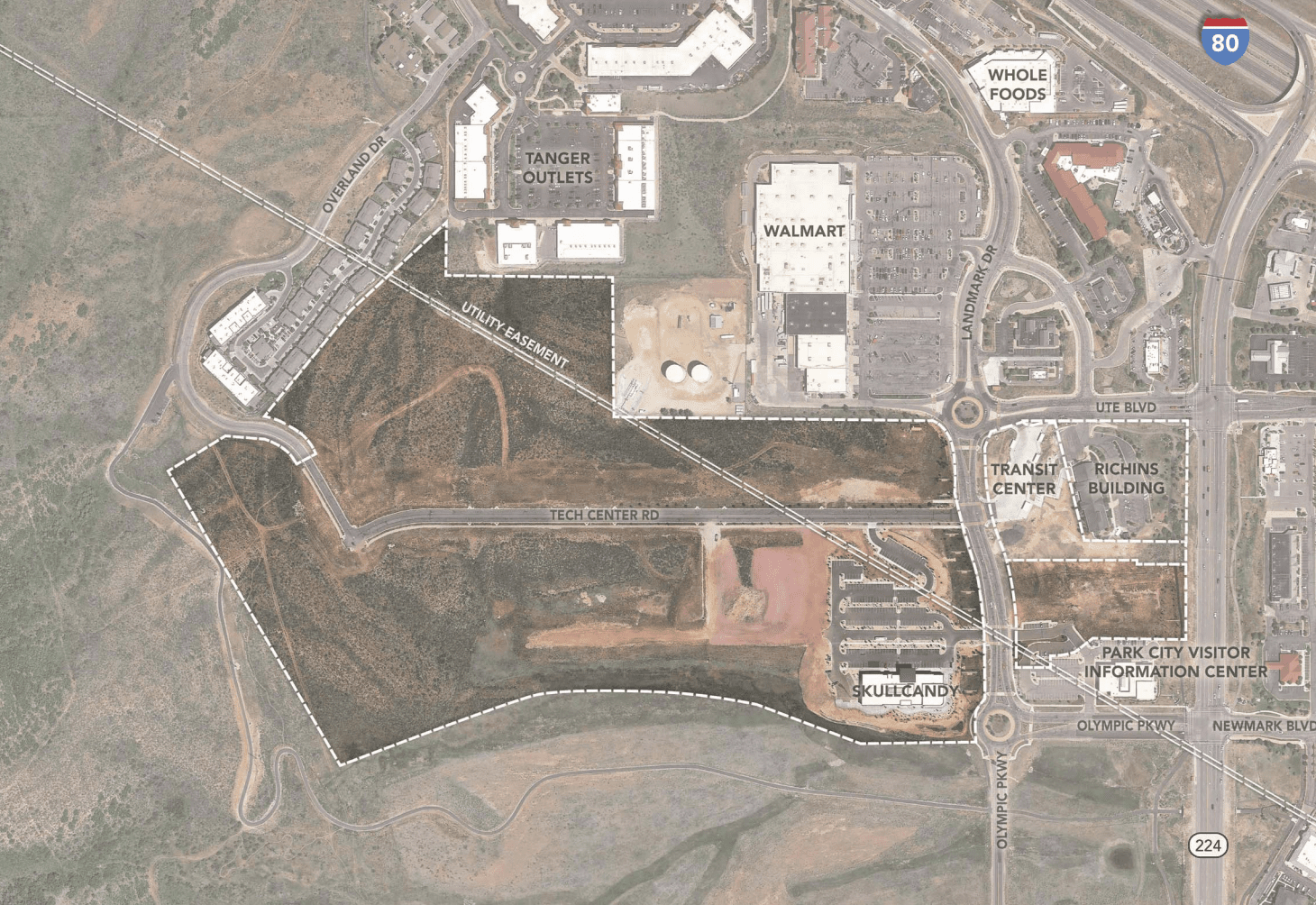Growth
Councillor Hart and Dakota Pacific’s CEO Stanworth weigh in on referendum battle

Summit County residents sign the referendum petition outside Macey's Market in Pinebrook. Photo: Marina Knight // TownLift
"To sit back and allow the citizens to be fed a counter narrative from the petitioners and not supply citizens with real facts and information upon which to make an informed decision would be disingenuous and irresponsible," - Marc Stanworth, Dakota Pacific CEO
PARK CITY, Utah – According to County Councillor Canice Hart, Summit County residents pushing for a referendum on the Dakota Pacific development may not fully understand the implications of their vote. In a recent interview with TownLift, Hart explained that even if the referendum succeeds, it does not mean the development will be stopped.
TownLift reached out to Hart and to Marc Stanworth, Dakota Pacific CEO as a boots-on-the-ground team of volunteers has been busy gathering signatures from Summit County residents, which is the first step in trying to bring a decision about the Dakota Pacific Real Estate project in Kimball Junction to the people.
On Dec. 18, the Summit County Council approved an amended development agreement, now called Ordinance 987, that will allow for 890 housing units to be built near the Skullcandy building on the west side of Kimball Junction. 725 units will be allocated to the developer and 165 for the county as affordable housing. 46% of the units approved for the developer Dakota Pacific will be designated as “attainable” housing.
Over the weekend, Dakota Pacific Real Estate executives were found to be tied to a newly formed Political Issues Committee (PIC) called Wasatch Back Future. While website and email communications sent to residents across Summit County over the weekend were anonymous, as of Monday afternoon the Wasatch Back Future website has been updated to state that DPRE created the PIC, however Standworth did not provide a comment on who created its website, if the group is connected with any elected officials or how the group obtained a list of Summit County residents email addresses when asked by TownLift.
Wasatch Back Future is urging voters not to sign the referendum petition and they offer steps for people to remove their signature from the petition. Wasatch Back Future has also distributed print material to persuade people not to sign the petition.
Stanworth explained his stance on the referendum and the creation of Wasatch Back Future in simple terms.
“To sit back and allow the citizens to be fed a counter narrative from the petitioners and not supply citizens with real facts and information upon which to make an informed decision would be disingenuous and irresponsible,” Stanworth said.
He added that signing the petition runs contrary to the county’s collective self interest, which is supported by the outcome of the council’s 4-1 vote in favor of the project.
“We continue to follow all laws through our efforts to provide a source of truth about this important issue,” Stanworth said. “But beyond our information, we hope the county residents will take the time to seek to truly understand the issues by reaching out to their elected leaders and other reliable, informed sources.”

At the heart of the matter, Hart said, is the county’s existing development agreement with Dakota Pacific, which remains in place regardless of the referendum outcome.
“If the referendum is approved, Dakota Pacific still owns the land, still has a development application in to amend it, and the council has to just continue processing it,” Hart said. Essentially, a successful referendum, a situation where residents of Summit County would vote to overturn the council’s 4-1 decision, would reset the process rather than terminate the development altogether.
Hart, who said he was opposed to the project in the beginning, said that after becoming steeped in the details during many meetings with Dakota Pacific and in the reality of the situation with the state legislature – who has been watching the process closely – he ultimately decided that voting to approve the amended agreement with Dakota Pacific was the option that gave Summit County the best outcome because it meant there would be a known outcome.
“Whether we vote yes or no this project is getting built, land use authority will get taken away in this next legislative session,” council member Canice Hart said at the Dec. 18 vote, in which he voted to approve the project.
County officials have confirmed that Dakota Pacific has yet to sign the amended agreement, choosing instead, Hart said, to wait for the referendum process to unfold.
The County Attorney’s office declined to comment on or provide an explanation about what an unexecuted agreement means in legal terms for the deal made in December.
Hart said it was a missed opportunity to not have Dakota Pacific sign the agreement on Dec. 18 because of certain clauses the agreement contains. One clause states if the developer signs the agreement, they accept the outcome of the county’s lawsuit over Senate Bill 84. This would settle the ongoing legal dispute. Another clause says if there is a referendum or the developer backs out, the agreement reverts back to the original tech park agreement. This was meant to prevent the developer from simply selling the agreement to another party.
“They just chose not to sign it,” Hart said.
“While we continue to explore alternative paths in the event the Council is unable to enter into the development agreement, our intent remains focused on delivering the program agreed upon with the Council,” Stanworth said.
The broader concern, Hart noted, is that if the referendum proceeds and a new municipality is created leveraging the newly created HB 258, local leaders could lose significant control over development regulations. A new municipality could change zoning laws, allowing for increased density and taller buildings beyond what the county initially negotiated.
State enables Dakota Pacific developers to turn Kimball Junction project into self-governed town
“They make the rules,” Hart warned. “They can increase the density, they can make it taller.”
One key issue that would be lost in a municipal takeover is the county’s ability to tie development progress to much-needed road infrastructure improvements on Highway 224. The current agreement ensures phased construction based on road fixes, preventing major congestion issues. If a new municipality takes over, that provision could be eliminated.
Hart also acknowledged that the county is closely watching the state legislature, which could introduce new laws impacting the development. A decision from the lieutenant governor on the potential municipality is expected within weeks.
For now, Hart urged residents to educate themselves before making a decision on the referendum. “I think people need to make that decision themselves,” Hart said. “I just want them to have good information.”
For more information on Wasatch Back Future visit their website here.
For more information on Protect Summit County visit their website here.



















